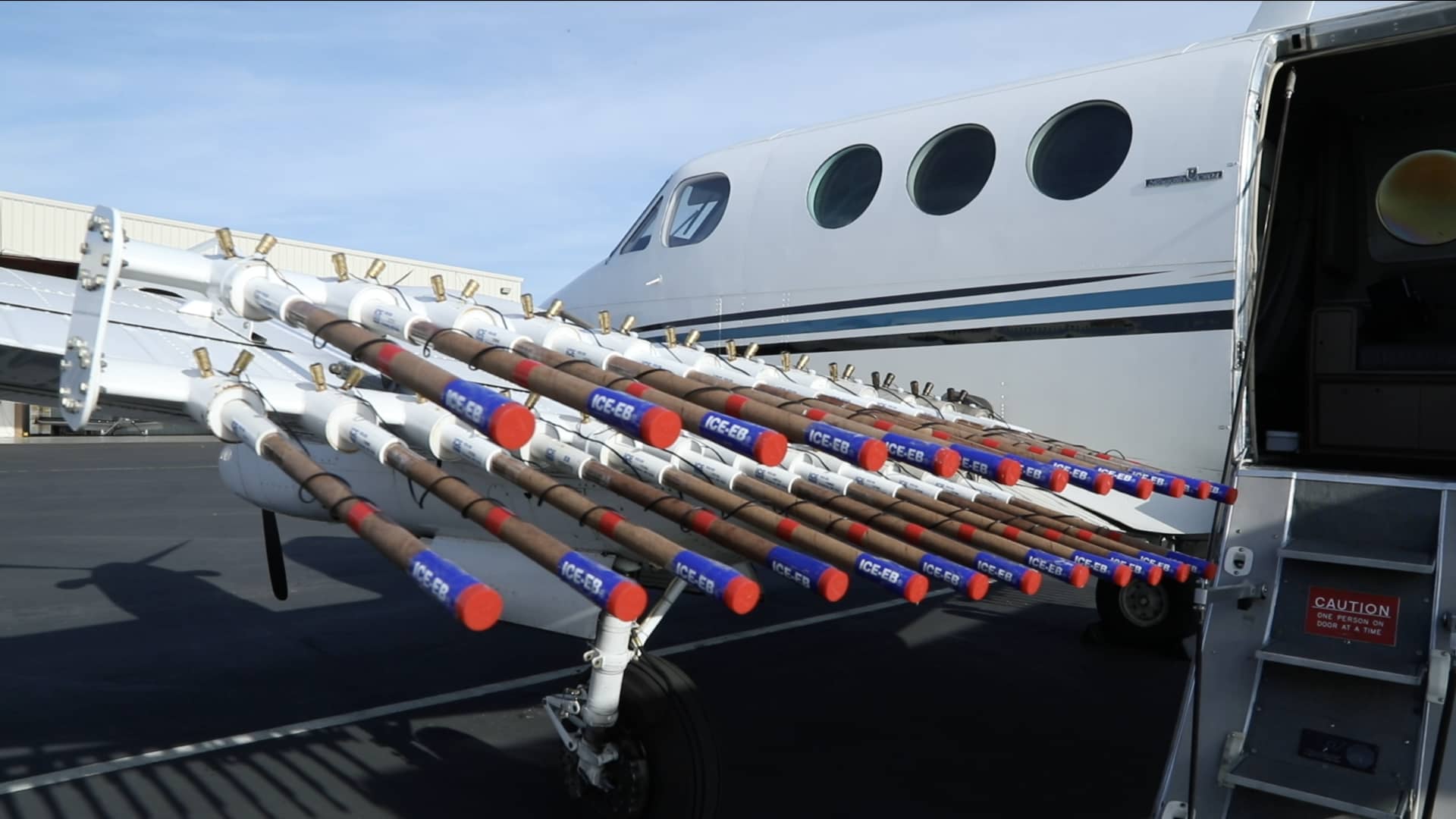
Whenever there’s a big storm in the American West, pilots are likely flying into the eye, seeding clouds with a substance called silver iodide. The goal is to increase precipitation.
Cloud seeding has been around since the 1940s. It’s become widespread of late as the West battles a drought of historic proportions. States, utility companies and even ski resorts are footing the bill.
While it was was assumed for decades to be effective, recent studies have helped prove that cloud seeding works, and there’s no evidence that silver iodide is harmful at current levels. Experts say cloud seeding generally yields a 5% to 15% increase in precipitation.
It’s no cure for drought, but cloud seeding can be an important water management tool.
“We can’t make a storm happen and we can’t create conditions in this storm that are ideal. Those happen naturally,” said Jason Carkeet, a utility analyst and hydrologist with the Turlock Irrigation District in central California. Turlock started its cloud-seeding program in 1990.
“What we’re doing is just taking advantage of existing conditions, naturally occurring conditions, and trying to make the storm again more efficient from a water supply perspective,” Carkeet said.
How cloud seeding works
When done aerially, cloud seeding involves loading up a plane with silver iodide. Flares are placed on the wings and fuselage.
The pilot reaches a certain altitude, where temperatures are ideal, and shoots the flares into the cloud. The silver iodide causes individual water droplets within the clouds to freeze together, forming snowflakes that eventually become so heavy that they fall.
Absent the freezing process, the droplets wouldn’t bond together and become large enough to precipitate as either rain or snow.
“The cloud initially is all water,” said Bruce Boe, vice president of meteorology at Weather Modification International, a private company that’s been providing cloud-seeding services since 1961. “Eventually, as it gets toward the summit of the mountain, it may be 50% ice or maybe more than that. But even if it is, there’s still a lot of liquid water left there.”
Boe said there’s a “window of opportunity” to get the precipitation big enough to fall “before it crests the mountain and starts to descend and thus warm.”
Pilot Joel Zimmer, who works for Weather Modification International, affixes silver iodide flares to the bottom of a cloud seeding plane.
Katie Brigham | CNBC
For cloud-seeding pilots like Joel Zimmer, who works with Weather Modification International to seed clouds for the Turlock Irrigation District, flying into the storm can be an exhilarating but intense experience.
“By the time the wheels are up, you’re in cloud,” said Zimmer, whose route involves seeding over the Sierra Nevada mountains. “And we’re in cloud the entire mission until we’re shooting an approach back into an airport and then pop out of the clouds and have a visual on the runway. It feels like you’re a sub commander in the Navy. You don’t see anything.”
From a water supply perspective, it’s most valuable to seed clouds over mountains, where the water is essentially stored as snow until the spring runoff.
“When it’s out on the plains such as North Dakota, it’s still a benefit because it helps recharge soil moisture,” Boe said. “But it can’t be stored and used for a later date.”
While Texas uses cloud seeding to help irrigate fields for farmers, it’s more common in the West, where states like Idaho, California, Colorado, Utah and Wyoming use it to help fill up their rivers and reservoirs. Most programs use planes for cloud seeding, but some use ground-based flares.
“It’s a lot more common than people think,” Carkeet said. “More basins have a seeding program than do not have a seeding program.”
Costs and impact
Boe says the cost is almost always worth it.
“It makes a lot of sense to water managers to go ahead and do it, even if the increase is on the order of a few percentage points,” he said.
Idaho Power spends about $4 million a year on its cloud-seeding program, which yields an 11% or 12% increase in snowpack in some areas, resulting in billions of gallons of additional water at a cost of about $3.50 per acre-foot. That compares with about $20 per acre-foot for other methods of accessing water, such as through a water supply bank.
And though Turlock only sees a 3% to 5% increase in runoff from its program — which has a maximum budget of $475,000 — California will take all the extra water it can get.
“It’s one of the things that makes it so hard to evaluate, is you don’t see a doubling or tripling of the precipitation,” Boe said. “You see an incremental increase, but you add that up over the course of a winter and then it can be significant.”
Watch the video to learn more about what it takes to make it rain.


